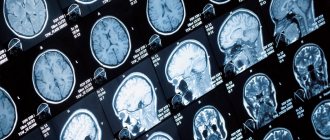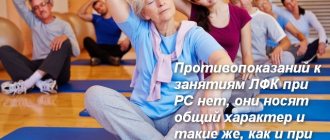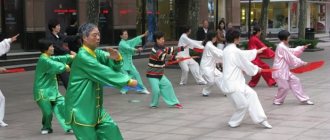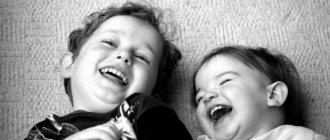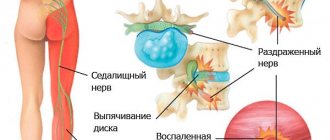Complex treatment of movement coordination disorders in Moscow. Diagnosis of the causes of ataxia and accompanying symptoms using the clinic’s advanced equipment, formation of an individual treatment program for the disorder using drug therapy and physiotherapeutic techniques.
Neurologist consultation
Chaika Natalya Vladimirovna
Neurologist, 1st category
Physiotherapist, hirudotherapist
11 years of experience
Leave your phone number. The clinic administrator will call you back.
Make an appointment
Admission fee for the promotion:
3000 rubles
We treat any types of ataxia:
- Vestibular - if you suffer from dizziness, frequent nausea and vomiting, hearing loss, gait has become unsteady.
- Cerebellar - if there is a lack of coordination of movements in the dark and with eyes closed, the gait becomes unsteady, the reaction becomes slow, and speech becomes slurred.
- Cortical - if walking is unsteady, it is difficult to take a step or turn, stand still, and auditory hallucinations appear.
- Psychogenic - if walking becomes broken and weaving, with crossing legs or sudden steps to the side.
- Sensitive – if you lose your balance when closing your eyes, and you have to raise your legs high and forcefully lower them to the floor.
Principles and goals of our work:
- We don’t just treat symptoms, but diagnose and eliminate the cause of the disease
- We use not only medications, but also advanced methods of hardware physiotherapy and a system of exercise therapy exercises
- We create individual therapy for disorders according to the symptoms and needs of each patient
- We restore healthy mobility and clear orientation in space, healthy hearing, speech and writing functions.
- We eliminate side symptoms - nausea, headache and neck pain, weakness, auditory hallucinations.
Ataxia
The emergence of sensitive ataxia
caused by damage to the posterior columns (bundles of Gaulle and Burdach), less commonly the posterior nerves, peripheral nodes, parietal cortex, thalamus (funicular myelosis, tabes dorsalis, tumors, vascular disorders). It may manifest itself in all limbs, or in one leg or arm. The most significant phenomena are sensory ataxia, which occurs as a result of a disorder of joint-muscular sensation in the lower extremities. The patient is unsteady, when walking he bends his legs excessively at the hip and knee joints, and steps too hard on the floor (stamping gait). Often there is a feeling of walking on cotton wool or carpet. Patients try to compensate for the disorder of motor functions with the help of vision - when walking, they constantly look at their feet. This can significantly reduce the manifestations of ataxia, and closing the eyes, on the contrary, aggravates them. Severe lesions of the posterior columns practically make it impossible to stand and walk.
Cerebellar ataxia
- a consequence of damage to the cerebellar vermis, its hemispheres and peduncles. In the Romberg position and when walking, the patient falls (even to the point of falling) towards the affected cerebellar hemisphere. If the cerebellar vermis is damaged, it is possible to fall to any side or backward. The patient staggers when walking and places his legs wide. The flanking gait is severely impaired. Movements are sweeping, slow and awkward (more so on the part of the affected cerebellar hemisphere). Coordination disorder is almost invariable during visual control (open and closed eyes). There is a disturbance in speech - it slows down, becomes stretched, jerky, and often chanted. Handwriting becomes splayed, uneven, and macrography is observed. There may be a decrease in muscle tone (more on the affected side), as well as a violation of tendon reflexes. Cerebellar ataxia can be a symptom of encephalitis of various etiologies, multiple sclerosis, malignant neoplasm, vascular lesion in the brainstem or cerebellum.
Vestibular ataxia
develops when one of the sections of the vestibular apparatus is damaged - the labyrinth, vestibular nerve, nuclei in the brain stem and the cortical center in the temporal lobe of the brain. The main symptom of vestibular ataxia is systemic dizziness (it seems to the patient that all objects around him are moving in the same direction), dizziness intensifies when turning the head. In this regard, the patient staggers randomly or falls, and makes head movements with noticeable caution. In addition, vestibular ataxia is characterized by nausea, vomiting and horizontal nystagmus. Vestibular ataxia is observed in brainstem encephalitis, ear diseases, tumors of the fourth ventricle of the brain, as well as in Meniere's syndrome.
Development of cortical ataxia
(frontal) is caused by damage to the frontal lobe of the brain caused by dysfunction of the fronto-pontine-cerebellar system. In frontal ataxia, the leg contralateral to the affected cerebellar hemisphere is most affected. When walking, there is instability (more so when turning), tilting or leaning to the side ipsilateral to the affected hemisphere. With severe lesions of the frontal lobe, patients cannot walk or stand at all. Vision control has no effect on the severity of walking disorders. Cortical ataxia is also characterized by other symptoms characteristic of damage to the frontal lobe - the grasping reflex, mental changes, and impaired sense of smell. The symptom complex of frontal ataxia is very similar to cerebellar ataxia. The main difference between cerebellar lesions is evidence of hypotonia in the ataxic limb. The causes of frontal ataxia are abscesses, tumors, and cerebrovascular accidents.
Hereditary cerebellar Pierre-Marie ataxia
- a hereditary disease of a chronic progressive nature. It is transmitted in an autosomal dominant manner. Its main manifestation is cerebellar ataxia. The pathogen has high penetrance, skipping generations is very rare. A characteristic pathological sign of Pierre-Marie ataxia is cerebellar hypoplasia, less often - atrophy of the inferior olives, the cerebral bridge (pons). Often these signs are combined with combined degeneration of the spinal systems (the clinical picture resembles Friedreich's spinocerebellar ataxia).
The average age of onset is 35 years when gait disturbance appears. Subsequently, it is accompanied by disturbances in facial expressions, speech and ataxia in the hands. Static ataxia, adiadochokinesis, and dysmetria are observed. Tendon reflexes are increased (to pathological reflexes). Involuntary muscle twitches are possible. Strength in the muscles of the limbs is reduced. Progressive oculomotor disorders are observed - paresis of the abducens nerve, ptosis, convergence insufficiency, less often - Argyll Robertson's sign, optic nerve atrophy, decreased visual acuity, narrowing of the visual fields. Mental disorders manifest themselves in the form of depression and decreased intelligence.
Familial Friedreich's ataxia
- a hereditary disease of a chronic progressive nature. It is transmitted in an autosomal dominant manner. Its main manifestation is mixed sensory-cerebellar ataxia, resulting from combined damage to the spinal systems. Consanguineous marriages are very common among patients' parents. A characteristic pathological sign of Friedreich's ataxia is increasing degeneration of the lateral and posterior columns of the spinal cord (up to the medulla oblongata). Gaulle's bundles are most affected. In addition, the cells of Clark's columns are affected, and along with them the posterior spinocerebellar tract.
The main symptom of Friedreich's ataxia is ataxia, which is expressed in an uncertain, clumsy gait. The patient walks in a sweeping manner, deviating from the center to the sides and placing his feet wide. Charcot designated this gait as a tabetic-cerebellar gait. As the disease progresses, incoordination spreads to the arms, chest muscles and face. Facial expressions change, speech becomes slow and jerky. Tendon and periosteal reflexes are significantly reduced or absent (primarily on the legs, later on the upper extremities). In most cases, hearing is reduced.
With the development of Friedreich's ataxia, extraneural disorders appear - cardiac lesions and skeletal changes. The ECG shows deformation of the atrial wave, rhythm disturbance. There is paroxysmal pain in the heart, tachycardia, shortness of breath (as a result of physical stress). Skeletal changes are expressed in a characteristic change in the shape of the foot - a tendency to frequent dislocations of the joints, an increase in the arch and extension of the fingers, as well as kyphoscoliosis. Among the endocrine disorders that accompany Friedreich's ataxia are diabetes, hypogonadism, and infantilism.
Ataxia-telangiectasia
(Louis-Bar syndrome) is a hereditary disease (phakomatoses group), transmitted in an autosomal recessive manner. Very often accompanied by dysgammaglobulinemia and hypoplasia of the thymus gland. The development of the disease begins in early childhood, when the first ataxic disorders appear. In the future, ataxia progresses and by the age of 10, walking is almost impossible. Louis-Bar syndrome is often accompanied by extrapyramidal symptoms (hyperkinesis of the myoclonic and athetoid type, hypokinesia), mental retardation, and damage to the cranial nerves. There is a tendency to repeated infections (rhinitis, sinusitis, bronchitis, pneumonia), which is primarily due to the insufficiency of the body’s immunological reactions. Due to the deficiency of T-dependent lymphocytes and class A immunoglobulins, there is a high risk of malignant neoplasms.
Consequences of coordination disorders. Why do you need a doctor?
Problems with walking and reaction, orientation in space and making simultaneous body movements is a dangerous condition in itself: after all, it does not allow you to fully work and live in society, and can cause an accident in the workplace or domestic accidents. But even more dangerous can be those destructive processes and diseases that are hidden behind discoordination:
- Multiple sclerosis
- Consequences of a stroke
- Chronic cerebral ischemia
- Acute alcohol or drug poisoning
- Brain tumors
- Diabetes
- Hypothyroidism
- Infectious diseases (HIV, neurosyphilis, cerebellitis, etc.)
- Congenital malformations of the brain
- Genetic metabolic diseases
Without timely diagnosis and the help of doctors, these diseases progress, cause disability and take away lives.
Treatment
Treatment of deterioration in coordination associated with stroke or other central nervous system pathologies is carried out only in a hospital setting. Treatment for vestibular ataxia can be carried out on an outpatient basis. The most common factor in the deterioration of coordination in vestibular ataxia is inflammatory diseases of the inner ear. Treatment is aimed at sanitizing the source of infection.
Complex therapy with antimicrobial and anti-inflammatory drugs (Otinum, Otipax, Sofradex) is used. When infection is excluded, treatment is carried out with nootropic (Piracetam, Phenibut), anticonvulsant (Carbamazepine, Carbalepsin) drugs and antihypoxants (Mildronate, Actovegin), and vitamin complexes are prescribed. Physiotherapy is required, including physical therapy and massage. Daily exercises combined with drug therapy make it possible to restore a complex coordination system.
The reception is conducted by specialists
How is the diagnosis done?
1. Consultation with a neurologist. At the initial appointment, the doctor reviews the patient's symptoms, takes a medical history, and performs a neurological examination and vestibular tests.
2. Diagnostic procedures. Based on the data obtained during consultation and testing, the neurologist prescribes an individual set of diagnostic procedures to the patient. This may include:
- General, biochemical blood test, hormone test
- X-ray of the skull
- Magnetic resonance, computed tomography of the brain and cervical spine (MRI and CT)
- Electrocardiography (ECG)
- Electroencephalography (EEG)
- Duplex scanning and rheoencephalography (USDG) of cerebral vessels
- Genetic analysis
3. Additional consultations. A neurologist can prescribe additional consultations for the patient with related specialists - a cardiologist, endocrinologist, oncologist, otolaryngologist and others.
Doctor's help
It is impossible to make a diagnosis yourself when it sways from one side to the other. This is done exclusively by specialists. To begin with, doctors monitor the patient’s movements using the following methods:
- observation of movements directed forward with the face and forward with the back;
- doctors watch how the patient moves in a straight line with his right and left sides;
- alternate change of step rhythm;
- comparison of walking with eyes closed and with eyes open;
- watching a person climb stairs;
- movement around an object (for example, a chair);
- making turns while driving;
- It is also suggested to walk on your toes and heels.
Based on the results, the doctor prescribes further examination and treatment:
- undergoing magnetic resonance imaging;
- X-ray;
- CT scan;
- blood donation (general analysis and biochemical);
- A biopsy of muscle tissue is performed.
In addition, the patient should be examined by other doctors:
- ENT;
- ophthalmologist;
- endocrinologist
After going through all the stages, the doctor can diagnose the patient and prescribe the necessary treatment.
You should turn to traditional medicine only after examination and consultation with a doctor.
Any medications are prescribed only by a certified specialist! All drugs are prescribed based on the individual characteristics of each organism. Medicines that help one person can cause irreparable harm to another.
Complex treatment
To fully treat motor coordination disorders and restore motor activity, we create an individual therapeutic complex, which includes both medication, exercise therapy, and physiotherapy methods.
Drug therapy
- Vestibular suppressants – for the treatment of dizziness and loss of spatial orientation.
- Antiemetics – for the treatment of nausea and vomiting due to dizziness.
- Stimulators of vestibular compensation - to restore the ability to maintain balance.
- Antithrombotic and vasodilator agents - for the treatment of blockage of cerebral vessels, improving local blood flow.
- Histamine preparations - to restore hearing, eliminate tinnitus, improve blood microcirculation.
- Nootropics - to restore healthy thinking, memory, speech and concentration, reaction speed, to stimulate metabolism in brain neurons.
- Sedatives, antidepressants, antipsychotics - for the treatment of psychogenic ataxia against the background of mental disorders, to increase the adaptive capabilities of the brain and central nervous system.
Exercise therapy for vestibular rehabilitation
The basis of vestibular gymnastics - physical therapy to restore the healthy functioning of the vestibular apparatus - are three types of exercises:
- For adaptation. Training to restore vision and improve the vestibulo-ocular reflex, which is responsible for visual acuity and maintaining balance when rotating the head.
- For habituation. Exercises to repeat characteristic body movements that cause dizziness, to develop habituation and gradually reduce the negative reaction to these maneuvers and body positions.
- For sensory replacement. Training on the use of preserved, healthy sensory systems to replace damaged ones - for example, on the use of the visual and somatosensory systems in cases of disorders of the vestibular system.
Physiotherapy
As an auxiliary therapeutic agent in the rehabilitation of balance, we use advanced methods of hardware physiotherapy:
- Translingual neurostimulation (TLNS). The impact of electrical impulses on the receptors of the tip of the tongue allows you to transmit a controlled signal through the brain stem to the structures of balance and coordination control - the cerebellum, vestibular nuclei and reticular activating system - and stimulate their healthy functioning.
- Biofeedback therapy with stabilometry. Under the guidance of an instructor, the patient undergoes classes on a stabilization platform, which evaluates the position and movements of his body. In this case, the person is connected by sensors to a biofeedback device (BFB) - it analyzes blood pressure, pulse and electrical activity of the brain. This procedure helps to explore the individual characteristics of walking and movement disorders and teaches the patient to cope with them.
- Magnetotherapy. The effect of magnetic fields on the brain and cervical-collar area improves blood supply and cellular interaction of the brain, helps eliminate muscle spasms and pinched nerve endings, and comprehensively improves the balance organs.
What causes it to appear
Impaired walking function is associated with pathologies of the central nervous system (CNS). The cerebellum is responsible for coordination. When it is damaged, incoordination of motor skills and movement appears, and it is difficult to maintain balance.
Causes of poor coordination when walking:
- brain tumors;
- pathology of cerebral arteries;
- endocrine diseases, including hypothyroidism;
- congenital malformations of the central nervous system;
- injuries;
- taking sleeping pills, anticonvulsants and other psychotropic drugs in large quantities;
- chemical poisoning;
- genetic abnormalities;
- vitamin B12 deficiency;
- multiple sclerosis.
Depending on the etiology, treatment for walking disorders is selected.
Symptoms of manifestation
People with a developing disease move poorly, are unsure, lack balance, appear distracted, and have impaired articulation. When trying to draw a figure, for example, a circle, in the air, the patient ends up with a zigzag or broken line.
One method of testing coordination is a test where the patient is asked to touch his nose. If the disease develops, a person cannot perform the assigned task normally. The patient gets it either in the mouth or in the eye. Negative changes are also visible in the handwriting: the letters are written unevenly, creep on top of each other, and jump along the line. These signs indicate neurological problems.
When coordination is impaired, the following symptoms appear:
- The pupil perceives the present as an illusion, objects are constantly in motion or rotation;
- The gait changes, there are frequent falls;
- High blood pressure is recorded, hypertension is detected;
- The patient becomes lethargic, drowsiness appears or sleep is disturbed;
- There is a malfunction in the functioning of the hearing organs: sometimes noises are heard, sometimes sudden silence;
- There is tremor of the limbs;
- There is a loss of clarity and coherence of movements;
- There are headaches for no apparent reason and severe dizziness;
- Irregular breathing, shortness of breath, increased sweating;
- Psychoneurological disorders occur - delusions, hallucinations.
Regardless of what symptom is present, you should immediately consult a doctor. The doctor assesses the patient’s condition and accurately establishes a diagnosis, on the basis of which a therapeutic intervention is prescribed. Early detection of disturbances in motor coordination leads to a reduction in symptoms and short-term therapy.


